Dashimaki Tamago is a dish that offers a unique twist on Tamagoyaki. It has a fluffier texture than regular tamagoyaki, and as soon as you take a bite, you can taste the umami of dashi stock, which perfectly complements the flavor of the eggs.
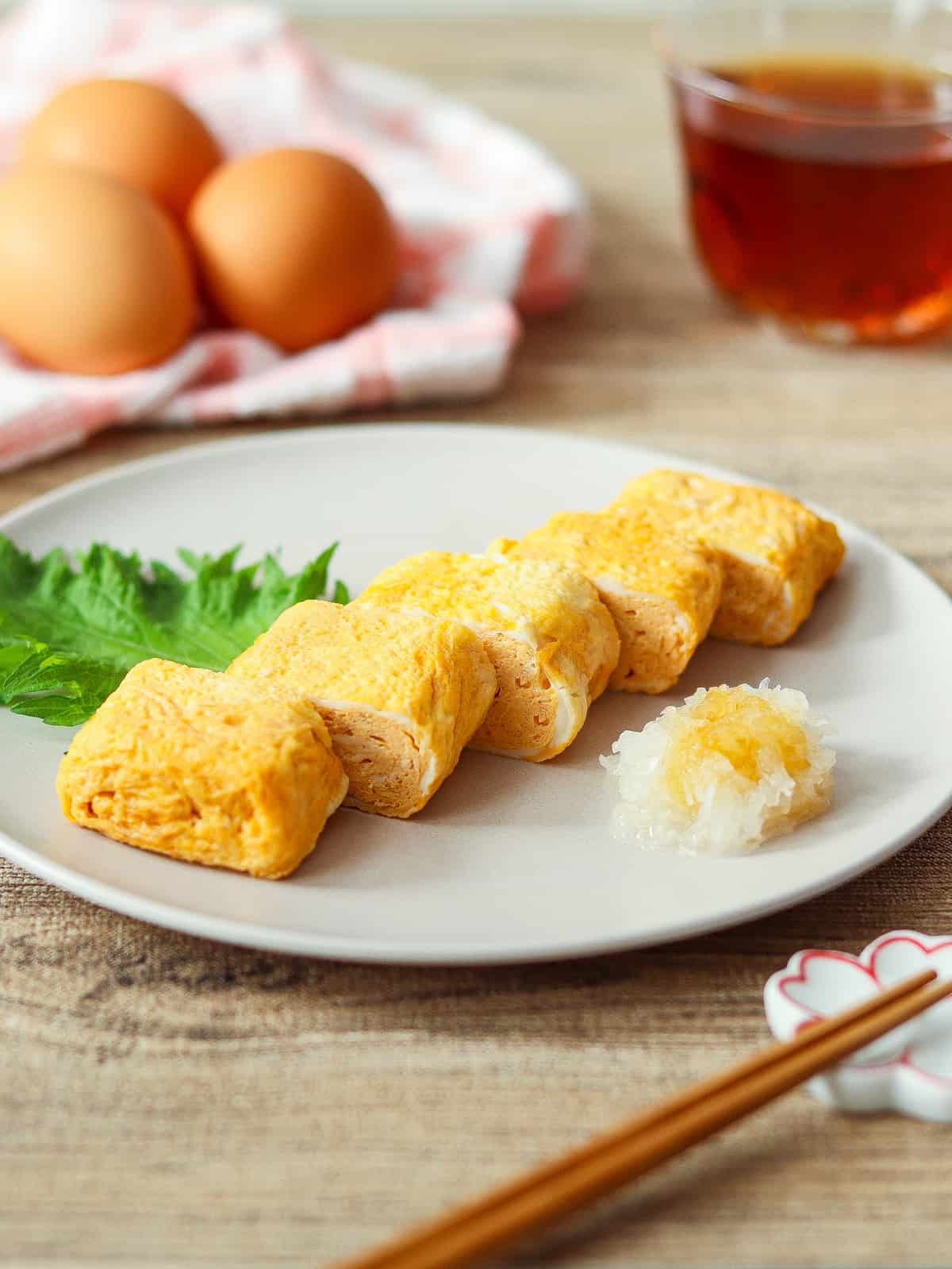
Jump to:
What is Dashimaki Tamago?
Dashimaki Tamago is a type of tamagoyaki prepared by adding dashi stock to the seasoned egg mixture. It is made by cooking the egg mixture thinly, rolling it up, and then repeating this process until the layers become thicker. "Dashi" means Japanese stock, "maki" refers to rolling, and "Tamago" means egg. Similar to tamagoyaki, this dish can be quickly prepared and offers the nutritional benefits of eggs.
Dashi is an indispensable element in Japanese cuisine, enhancing the flavors of dishes. Dashimaki tamago, made by incorporating it, has a higher moisture content than regular tamagoyaki, resulting in a fluffier texture and a more flavorful taste.
Differences from tamagoyaki
Dashimaki tamago is prepared in almost the same way as tamagoyaki, but the addition of dashi stock gives it a distinctive flavor. Here are some characteristics that differentiate dashimaki tamago from tamagoyaki:
• It is typically served for dinner.
While tamagoyaki is more commonly eaten for breakfast and is popular in bento (boxed lunches), dashimaki tamago is typically served for dinner due to the dashi preparation involved. Additionally, it is more often found in restaurants in Japan.
• It is typically garnished with grated daikon radish and soy sauce.
Although dashimaki tamago is delicious on its own, it is often garnished with grated daikon radish and soy sauce to enhance its flavor. These toppings not only refresh the palate but also aid in digestion, complementing the flavor of this dish nicely. I recommend trying both the garnished and plain versions to compare the flavors.
Kanto and Kansai styles
In Japan, the flavor of dashimaki tamago varies depending on the region. In the Kanto region, located in eastern Japan, many people prefer a sweeter flavor, while in the Kansai region, located in western Japan, it is common to use a stronger dashi stock and have a less sweet taste.
I live in Osaka, which is in the Kansai region, and prefer dashimaki tamago that is not very sweet, so I'd like to share a recipe for Kansai-style seasoning here. The intense umami of dashi and subtle salty flavor have an enduring charm that never gets boring.
Dedicated cooking utensil
In Japan, there is a dedicated cooking utensil known as a 'tamagoyaki pan,' specifically designed for making tamagoyaki and dashimaki tamago. The only difference between it and a regular frying pan is its rectangular or square shape, and almost every Japanese household that cooks has one, allowing for the easy creation of beautifully shaped dashimaki tamago. Although you can make it using a normal frying pan, if you are enthusiastic about making it regularly, I highly recommend getting a tamagoyaki pan.
Tamagoyaki pans are made of various materials, which can significantly affect the quality of the finished dish. Non-stick coated ones are affordable and require less oil to use, while copper ones can be an excellent choice if you aim to create the ultimate dashimaki tamago. They may be more expensive, but their high thermal conductivity results in a soft and delicate texture.
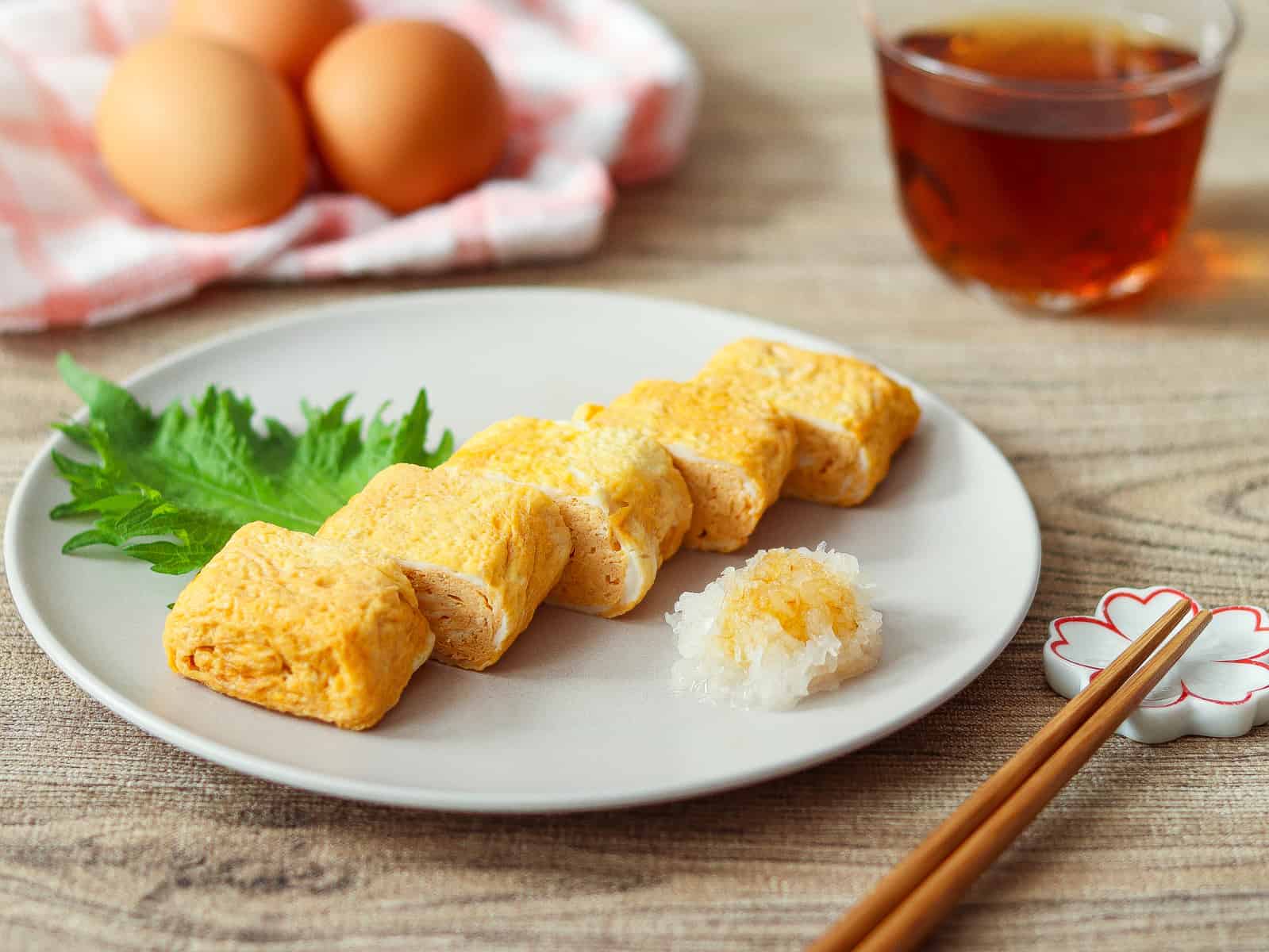
📋Step-by-step recipe
Equipment
- tamagoyaki pan (rectangular or square frying pan)
Ingredients
- 2 large eggs (about 2.1 oz/60 g each, including shell)
Seasonings:
- 3 Tbsp dashi stock (Please refer to the linked page for instructions on how to make it. For plant-based options, see the pages on Kombu Dashi and Shiitake Dashi.)
- ½ tsp mirin
- 1 tsp soy sauce
Garnish:
- 1 Tbsp grated daikon radish
- ½ tsp soy sauce (for the grated daikon)
Instructions
🕒 Total: 5 minsHere, I'm using a 'tamagoyaki pan' (rectangular or square frying pan) to make dashimaki tamago. If you want to make it in a regular frying pan, please refer to steps 2 through 7 on the linked page titled "Tamagoyaki" for instructions. There is an additional step to shape the egg mixture into a rectangle.
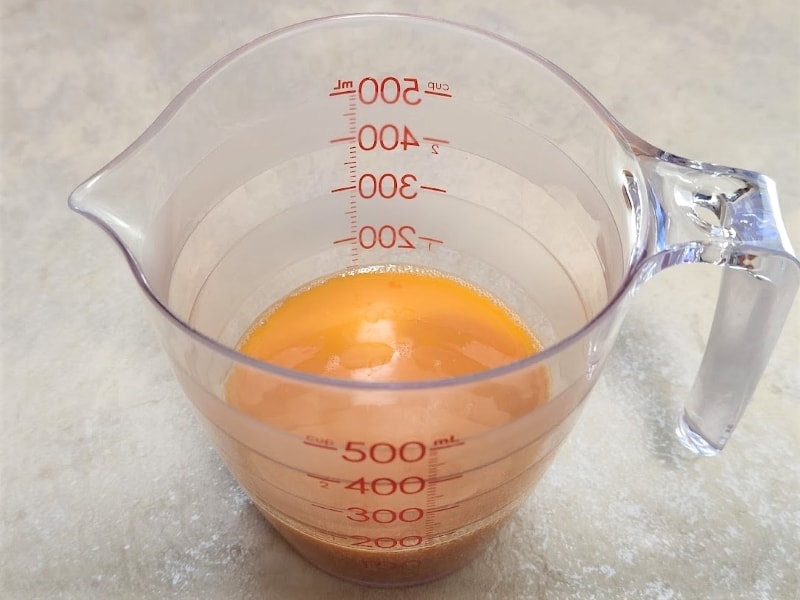
Step 1
Crack eggs into a bowl and beat them with seasonings (dashi, mirin, and soy sauce).
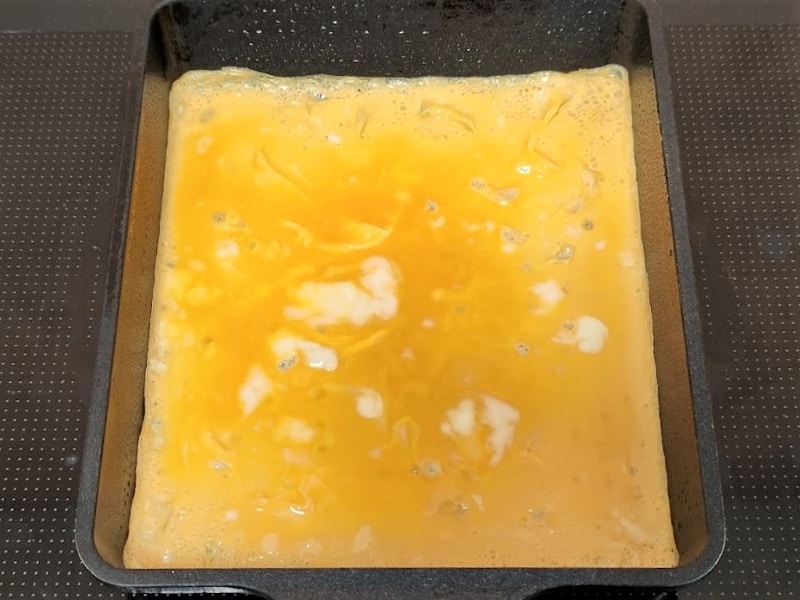
Step 2
Dip a small piece of folded paper towel in oil, then apply it to a tamagoyaki pan. Heat the pan over high heat. Once the pan is hot, pour about a quarter of the egg mixture (for 2 servings) into the pan.
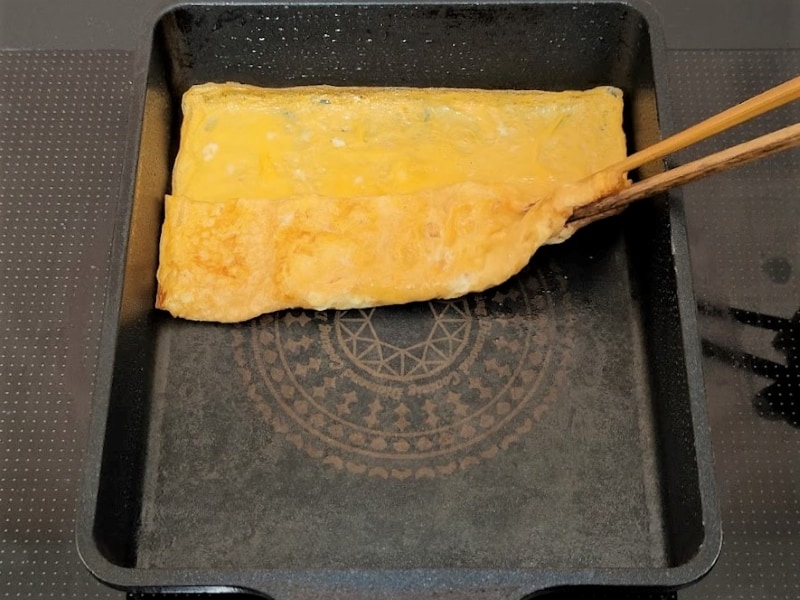
Step 3
If there are large air bubbles, pierce them and fill the holes with a small amount of the egg mixture. When the mixture is almost set but still slightly runny, roll it several times using chopsticks, folding it from front to back.
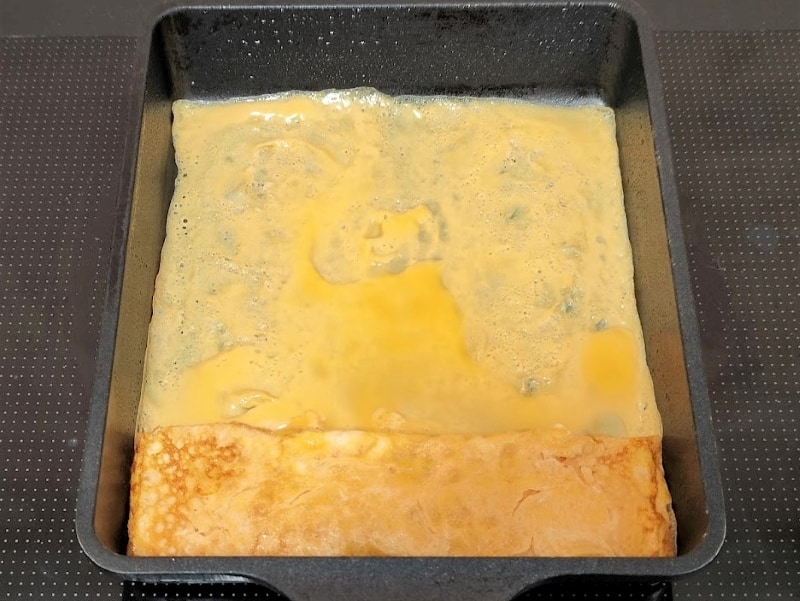
Step 4
Move the rolled egg to the front of the pan. Apply oil from the small folded paper towel to the pan, and pour an equal amount of egg mixture as in step 2 into the pan.
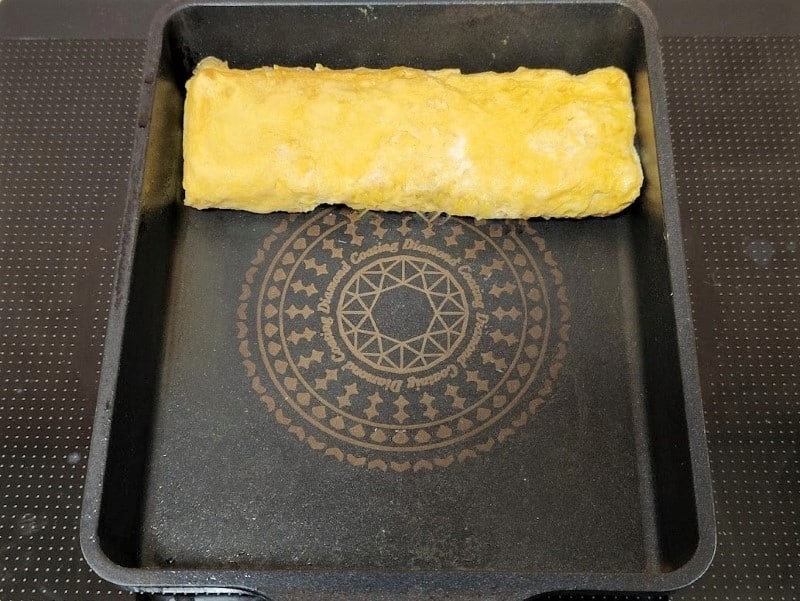
Step 5
Repeat the same process as in steps 3 and 4 until all of the egg mixture is used, increasing the layers of the rolled egg. Each time you pour the egg mixture, use chopsticks to lift the rolled egg, allowing the mixture to spread underneath it.
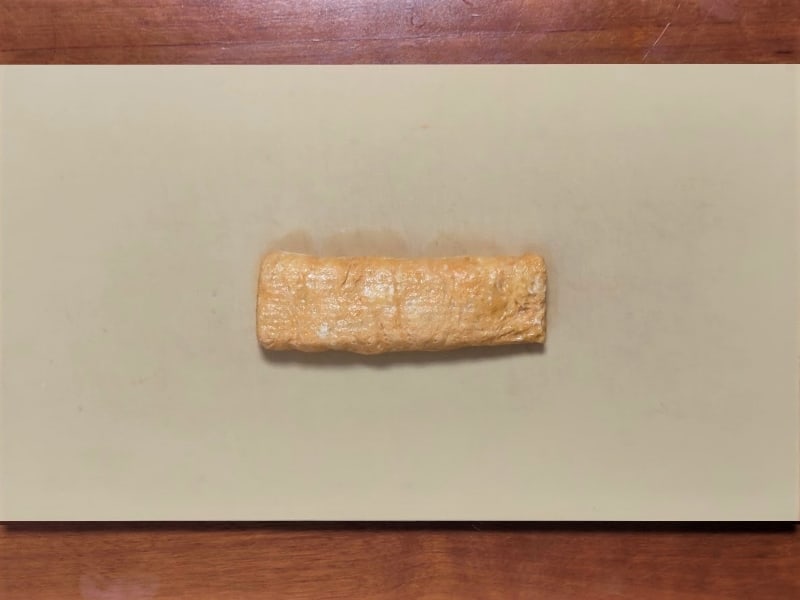
Step 6
Once it is done, remove it from the pan before it overcooks from the residual heat.
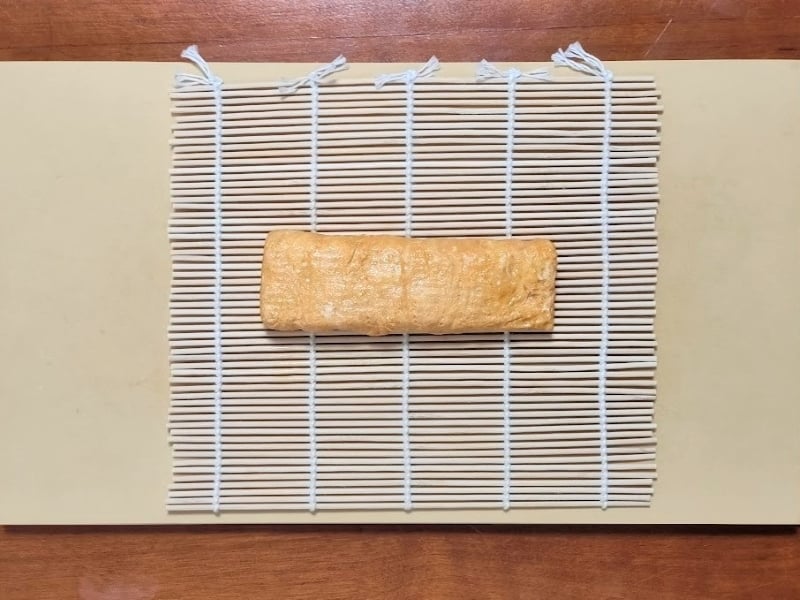
Step 7 (optional)
Place it on a sushi mat or paper towel and shape it nicely.
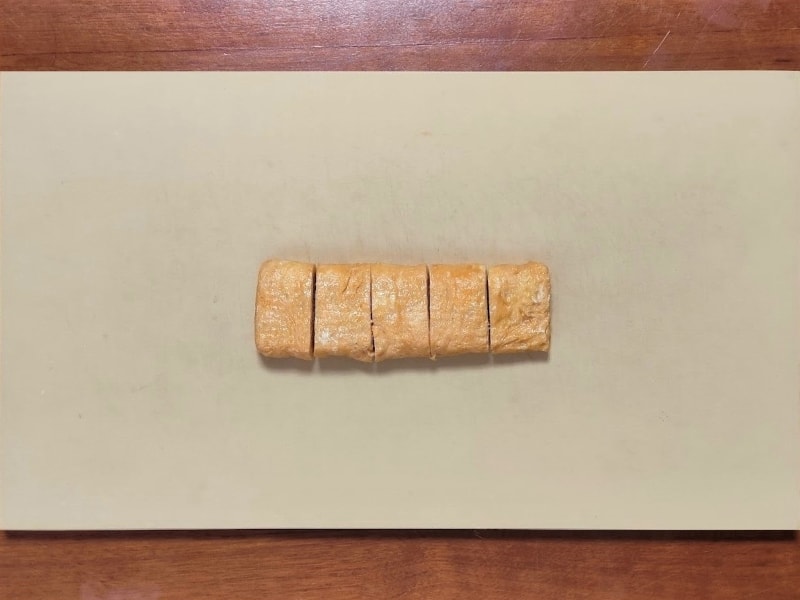
Step 8
Cut it into 1-inch (2.5 cm) pieces.
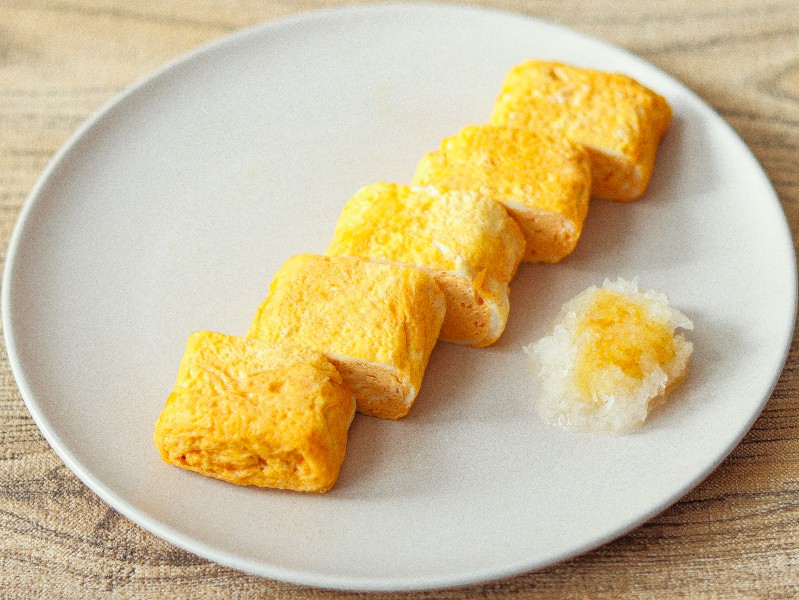
Step 9
Garnish with grated daikon radish and soy sauce to taste.
To store
You can store it in the refrigerator for up to 2 days.
Tips on how to make
Similar to tamagoyaki, dashimaki tamago is a dish that cooks quickly over high heat, so you may need some practice to make it nicely. The following tips should help you get started with making this dish.
- Apply oil to the tamagoyaki pan each time you add the egg mixture. To avoid putting too much oil, dip a small piece of folded paper towel in oil and use it to coat the pan. Even when using a non-stick pan, it is still advisable to apply oil, as the mixture tends to stick.
- Cook the egg mixture over high heat. The high heat rapidly evaporates the moisture in the mixture and coagulates the proteins simultaneously, creating a fine texture. If you feel the heat is too intense, adjust by moving the pan away from the heat source.
- Carry out all the heating processes promptly. If the egg mixture is overcooked, it will become tough and dry.
- After cooking dashimaki tamago, shaping it with a sushi mat or paper towel is typically not practiced in Japanese households, but is often done in restaurants. It is also suitable for cooking in a frying pan.
If you try this recipe, I’d love to hear what you think. Please consider leaving a review and star rating in the comments below. If you enjoyed it, I’d really appreciate it if you shared it with your friends.
Recipe card
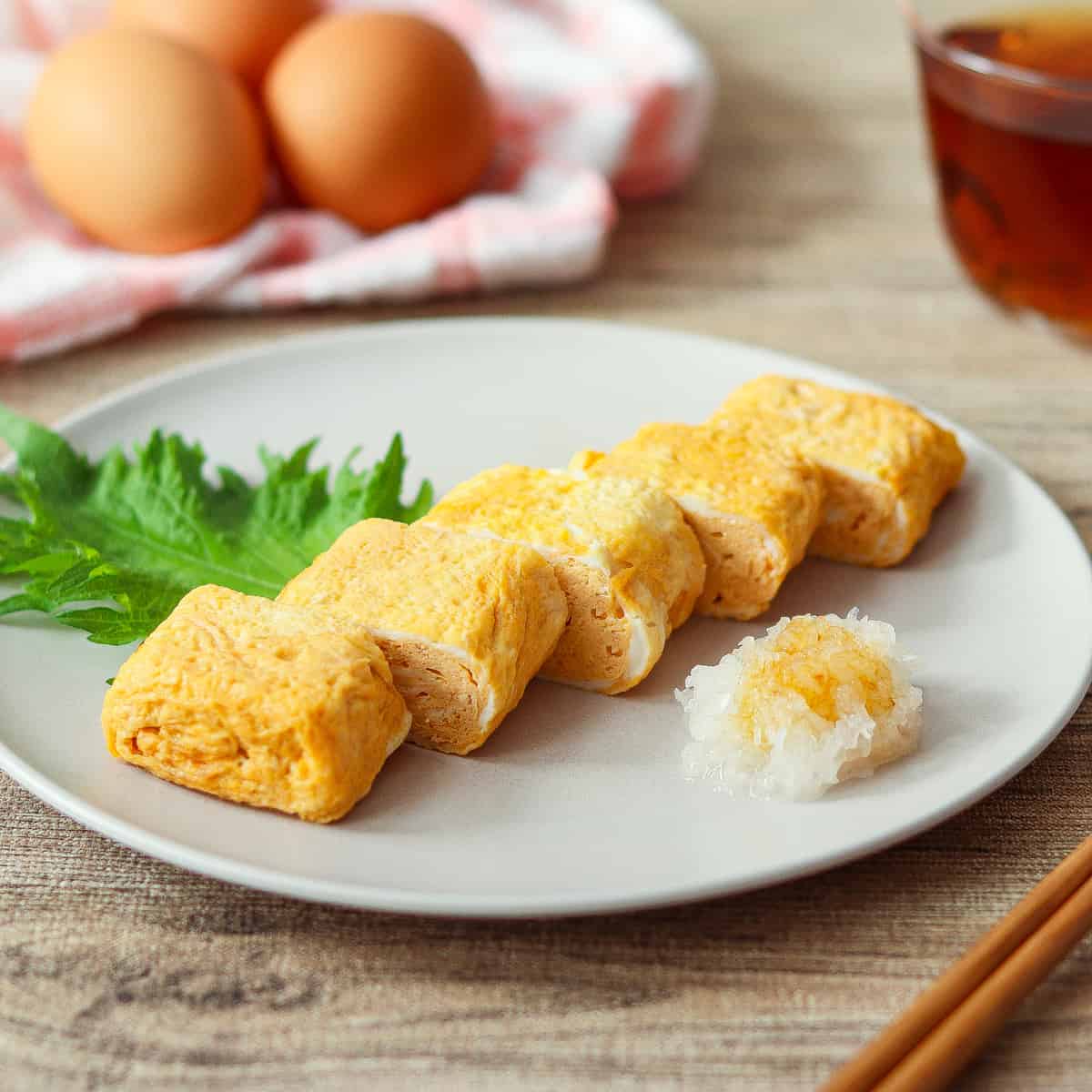
Dashimaki Tamago (Japanese Rolled Omelet with Dashi)
Equipment
- tamagoyaki pan (rectangular or square frying pan)
Ingredients
- 2 large eggs (about 2.1 oz/60 g each, including shell)
Seasonings:
- 3 Tbsp dashi stock (Please refer to the linked page for instructions on how to make it. For plant-based options, see the pages on Kombu Dashi and Shiitake Dashi.)
- ½ tsp mirin
- 1 tsp soy sauce
Garnish:
- 1 Tbsp grated daikon radish
- ½ tsp soy sauce (for the grated daikon)
Instructions
- Crack eggs into a bowl and beat them with seasonings (dashi, mirin, and soy sauce).
- Dip a small piece of folded paper towel in oil, then apply it to a tamagoyaki pan. Heat the pan over high heat. Once the pan is hot, pour about a quarter of the egg mixture (for 2 servings) into the pan.
- If there are large air bubbles, pierce them and fill the holes with a small amount of the egg mixture. When the mixture is almost set but still slightly runny, roll it several times using chopsticks, folding it from front to back.
- Move the rolled egg to the front of the pan. Apply oil from the small folded paper towel to the pan, and pour an equal amount of egg mixture as in step 2 into the pan.
- Repeat the same process as in steps 3 and 4 until all of the egg mixture is used, increasing the layers of the rolled egg. Each time you pour the egg mixture, use chopsticks to lift the rolled egg, allowing the mixture to spread underneath it.
- Once it is done, remove it from the pan before it overcooks from the residual heat.
- (Optional) Place it on a sushi mat or paper towel and shape it nicely.
- Cut it into 1-inch (2.5 cm) pieces.
- Garnish with grated daikon radish and soy sauce to taste.
Notes
- Here, I'm using a 'tamagoyaki pan' (rectangular or square frying pan) to make dashimaki tamago. If you want to make it in a regular frying pan, please refer to steps 2 through 7 on the linked page titled "Tamagoyaki" for instructions. There is an additional step to shape the egg mixture into a rectangle.
- You can store it in the refrigerator for up to 2 days.

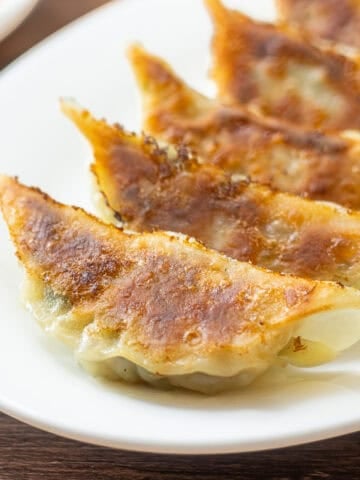
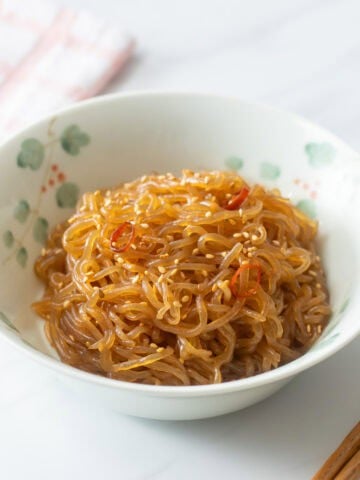
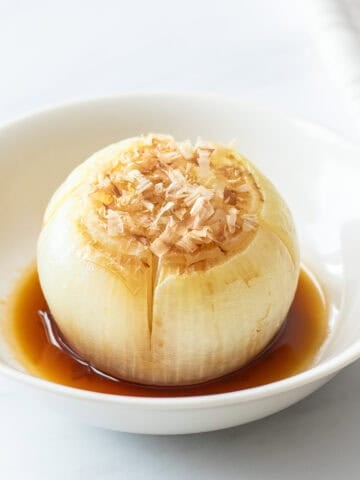
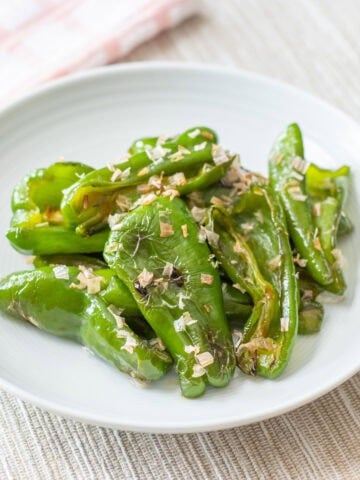
Leave a Rating and a Comment